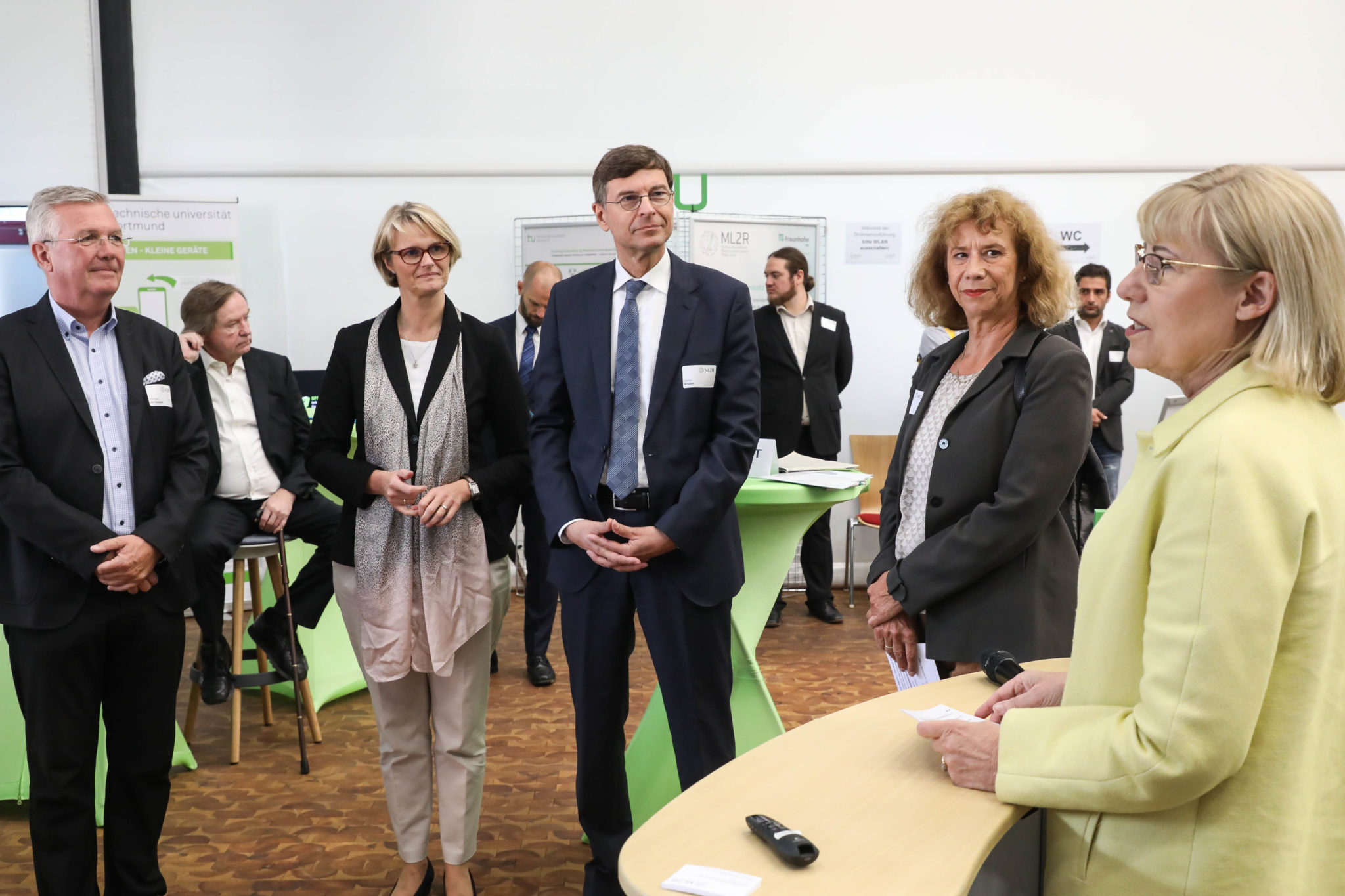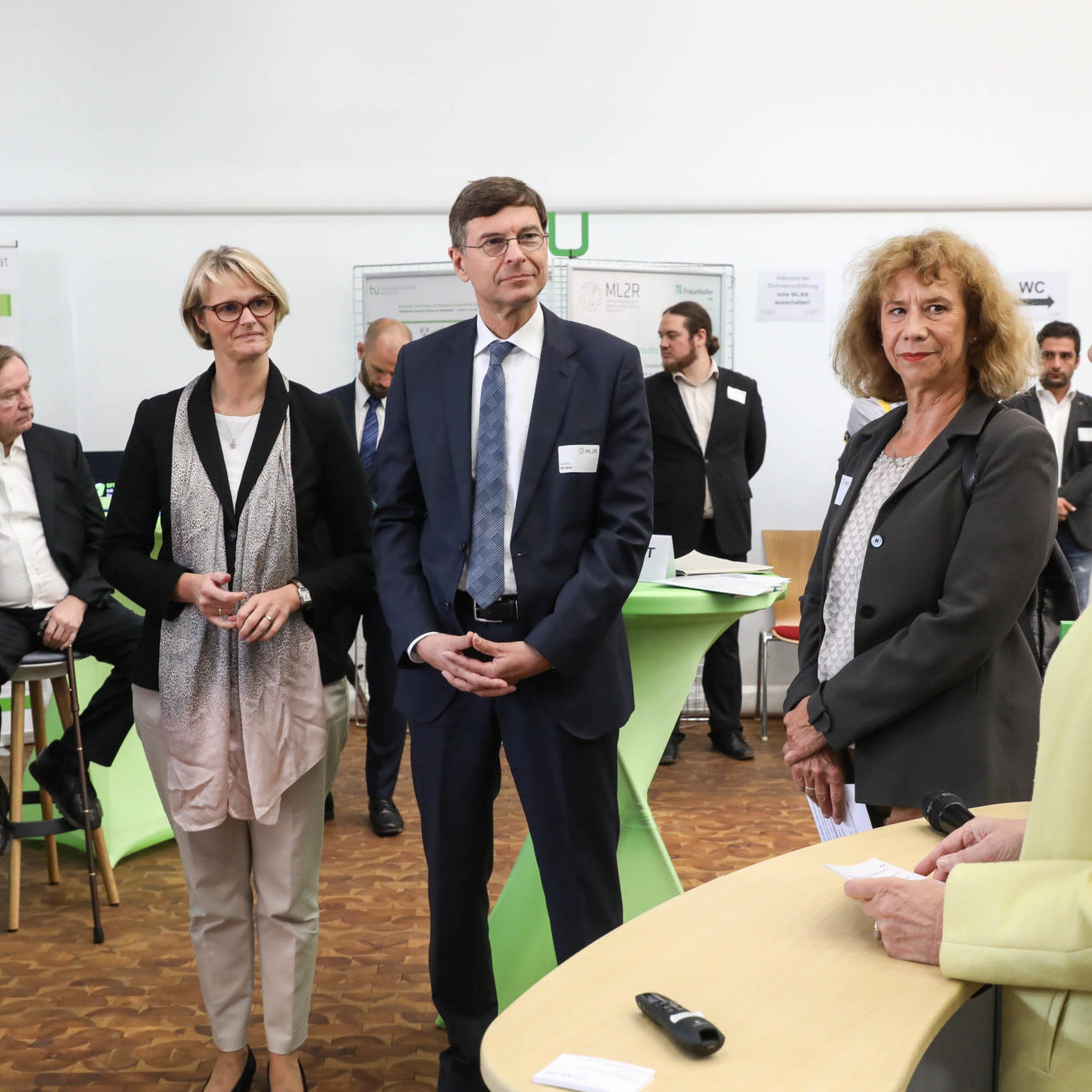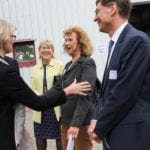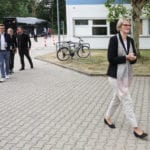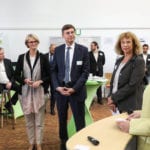Summer of Artificial Intelligence - Federal Research Minister Karliczek gained insights into machine learning applications at the ML2R Competence Centre
10. July 2019
Anja Karliczek, Federal Minister of Education and Research, visited the Rhine-Ruhr Machine Learning Competence Center (ML2R) together with journalists on 9 July. The Minister took the opportunity to experience practical applications of artificial intelligence (AI) and Machine Learning (ML) live and to try them out for herself: She met robots that make AI and ML comprehensible in a playful way, discovered AI systems that analyse spoken language, improve satellite images and make autonomous driving safer, and a swarm of drones buzzed over her. This gave the Minister impressions of outstanding projects funded by the Federal Ministry of Education and Research (BMBF) as part of the ML2R.
It is the summer of artificial intelligence: with its key technology, Machine Learning, it is the essential driver of the current digitalization of our economy and society. German AI research is flourishing and many companies are recognizing the great opportunities that intelligent technologies bring with them. Last but not least, the BMBF has declared 2019 the “Science Year of Artificial Intelligence”. What would a summer be without travelling? Yesterday, Federal Research Minister Anja Karliczek travelled to Dortmund and visited the Rhine-Ruhr Machine Learning Competence Center (ML2R) to find out about current projects and the Center’s plans for the future. The ML2R, located in Bonn, Sankt Augustin and Dortmund, is one of four nationwide nodes for ML top research, promotion of young researchers and transfer, initiated and supported by the BMBF.
Anja Karliczek was welcomed by the two speakers of ML2R, Prof. Dr. Katharina Morik and Prof. Dr. Stefan Wrobel, who introduced the competence »It is our goal to bring the research on Machine Learning from NRW to a worldwide leading level and to optimally position Germany for the digital future«, said Prof. Morik, Professor at the TU Dortmund. The ML2R combines basic and applied research and concentrates on three main research areas: Machine learning that is human-oriented, ML with limited resources and ML technologies that can integrate complex knowledge.
Research for practical application – Highlights from the ML2R
The ML2R scientists demonstrated how these research priorities find their way into economically and socially relevant applications by means of six concrete projects. The first of these was the little robot “Roberta”, who demonstrated how applications of artificial intelligence work and can be easily programmed. »With our ‘Roberta Initiative’, we at Fraunhofer IAIS have been showing for over 15 years how easy it is not just to use technology, but to design it ourselves – with ‘Roberta’, we have already inspired more than 450,000 children and young people with technology and introduced them to programming,« emphasized Prof. Wrobel, Director of the Fraunhofer Institute for Intelligent Analysis and Information Systems IAIS in Sankt Augustin and Professor at the University of Bonn. »In the context of ML2R, we show how complex topics such as AI and Machine Learning can be understood in a playful way.«
How energy can be saved during Machine Learning was explained by the researchers from the ML2R Dortmund location using the example of the »EQO« hardware. AI systems often require large computer systems in order to learn quickly – the latest findings even make it possible to learn on »quantum computers« in order to solve problems that are »too difficult« for classical computers. Since quantum computers consume a lot of energy, the ML2R team has developed a novel approach that is based on the functioning of quantum computers and makes use of evolutionary mechanisms of nature. The new hardware manages with a fraction of the energy required by quantum computers or classical mainframes.
Earth science also benefits from Machine Learning, which is particularly important in times of climate change. Data from satellites can help us better understand the vegetation of our planet and counteract the global food shortage. »However, a measurement can be rendered unusable by a cloudy sky,« says Prof. Morik. For this reason, the researchers at ML2R have developed new methods to learn how vegetation changes and thus make it possible to »illuminate« clouds that would otherwise render satellite images unusable.
Like the transfer into economic applications, the ML2R team has been successful with several projects that are in practical use at companies: The ML2R experts from the Sankt Augustin/Bonn location presented semantic language technologies that subtitle video contributions live, open up audiovisual media archives and bring language assistants to life. The minister’s tour also focused on security and transparency – using autonomous driving as an example, scientists from Fraunhofer IAIS showed how AI-based object recognition can be made more secure. The final point was a demonstration by Fraunhofer IML of the use of ML in logistics: a swarm of drones rose and solved complex logistical tasks using biointelligent behavior patterns.
At the end, the Minister and the accompanying journalists had the opportunity to engage in in-depth discussions with the ML2R experts and to experiment and try out the interactive exhibits.
About the Competence Center Machine Learning Rhine-Ruhr (ML2R)
The Competence Center ML2R conducts top ML research, promotes young scientists and strengthens technology transfer in companies. ML2R is one of four nationwide Machine Learning nodes funded by the Federal Ministry of Education and Research (BMBF). The Technical University of Dortmund, the University of Bonn, the Fraunhofer Institute for Intelligent Analysis and Information Systems IAIS in Sankt Augustin and the Fraunhofer Institute for Material Flow and Logistics IML in Dortmund are involved. Speakers of the Center are Prof. Dr. Katharina Morik (TU Dortmund) and Prof. Dr. Stefan Wrobel (Fraunhofer IAIS/University of Bonn).


